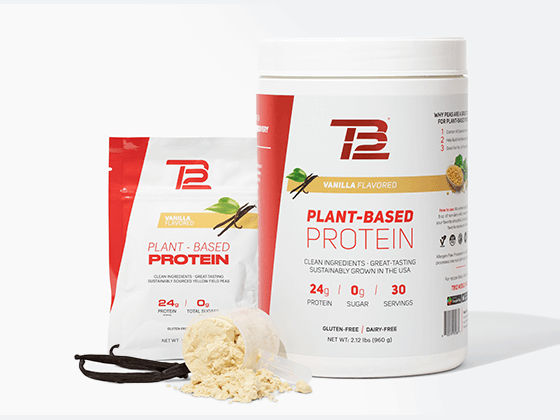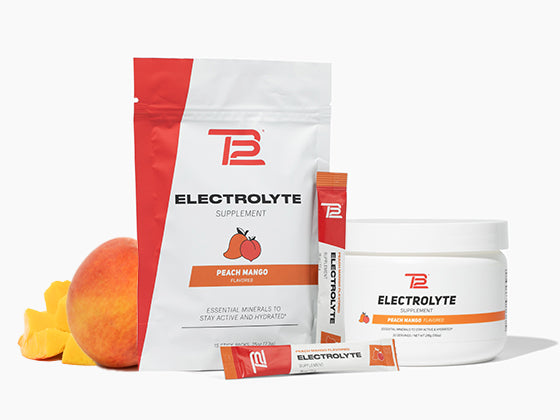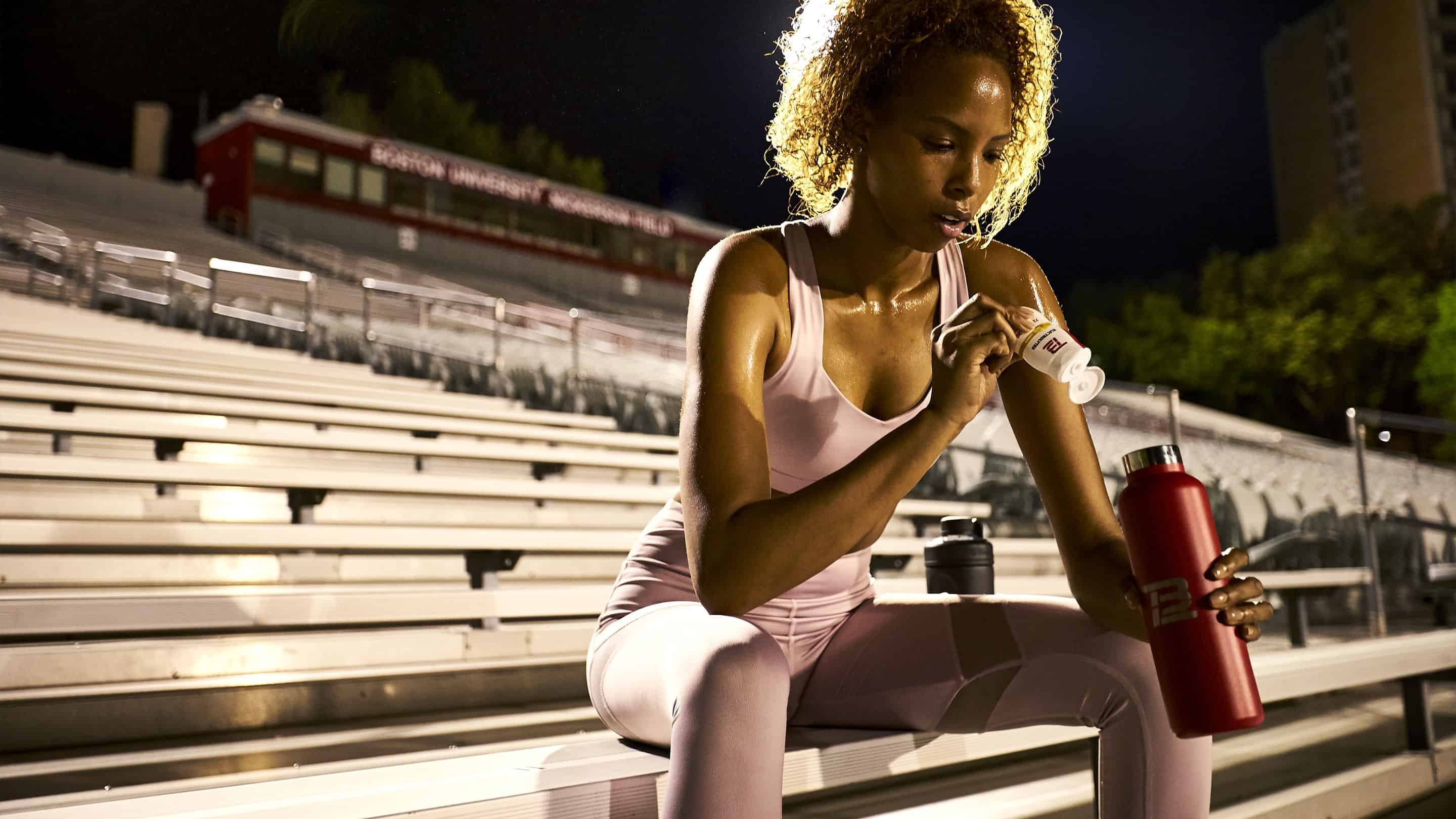We get a lot of insightful nutrition-related questions from our clients and followers every day, so we wanted to celebrate National Nutrition Month by answering some of your most common questions about all things nutrition!
Q1: If I’m not an athlete, do I need a lot of protein in my diet?
Athlete or not, we all need protein in our diet. While we often associate protein with muscle, proteins are also needed to make blood, hair, enzymes, antibodies, and connective tissue – to name just a few. Exactly how much we need depends on many factors – including our health and fitness goals, workout habits, fitness level, age, weight, etc.
In general, females should aim for about 1 palm (or fist) of protein per meal, while males should consume 1½ - 2 palms (or fists) worth per meal.
There are a few groups who would benefit from having more protein – especially those trying to add lean muscle or lose weight, or anyone over the age of 50 whose muscle tissue may be beginning to break down. Here are a few examples of people who could use more protein:
1. To Increase Muscle Mass
While athletes tend to be the focus here, they aren’t the only ones. Increasing lean muscle mass through both diet and exercise leads to improved health and quality of life. Now, if you don’t think you’re an athlete, let me be clear. To us, an athlete isn’t just our guy on the field, it’s anyone, of any age, who is active and constantly challenging themselves physically.
2. To Help with Weight Loss
Adding a little more protein to each meal/snack can help keep you feeling full longer, which potentially means less snacking. A word of caution – weight loss requires a decrease in calories consumed, so if you add more protein, but don’t decrease the total amount consumed, you may not get the results you want.
3. To Combat Sarcopenia
Sarcopenia is the loss of muscle mass as we get older. Around age 50 we begin to lose nearly 1% of muscle per year. Over time, this adds up. Newer research has found a higher protein intake in those over age 50, along with resistance training, helps slow sarcopenia letting you keep the muscle and strength you’ve worked hard to build.
If you fall into one of the groups above, add an additional ½ - 1 palm (or fist) per meal and snack. If the palm and fist amounts don’t resonate, another way to be sure you’re getting enough is to make ¼ (25%) of your plate protein.
Q2: How much water should I drink in a day?
We recommend drinking half your body weight in water daily.
Water is found in every cell, tissue, and organ of the body. It’s involved in chemical reactions, improves brain function and communication, helps deliver oxygen to the body, and lubricates joints. Most folks don’t drink nearly enough water over the course of the day, and we need to change that.
Here are some tips and tricks to improve your intake:
- Have a glass first thing in the morning before walking out the door.
- Bring a reusable container on the commute and drink half the bottle on the way in and half on the way home
- Always have a glass or bottle on your desk. If this still doesn’t work – set alerts on your phone to remind you to sip.
- Keep score – track how many bottles you drink over the course of the day. Simple tracking can raise awareness as to how much is actually consumed.
- Habit stack – pair having a glass of water with a habit (or habits) you already do daily without thinking. For example, “After I brush my teeth at night I will have a glass of water.” Brushing my teeth nightly is an engrained part of my routine. By pairing my new routine (drinking water) with brushing, I can start to create a new habit.
If you’re unsure about your hydration status, have a look at the color of your urine. Anything darker than pale yellow or clear may mean you’re dehydrated. Note: some B vitamins and medications will make your urine yellow.
Q3: How do I get more fiber in my diet?
There are two different types of fiber, soluble and insoluble. Both are equally important and effective for different reasons.
Soluble fiber helps give stool (poop) the right consistency – not too hard…not too runny…just right. Insoluble fiber adds bulk to our stool (poops) and helps keep things moving along.
Unfortunately, many of us don’t get enough fiber daily. This is partially due to our increased intake of highly processed foods where fiber has been stripped away.
More recently, the rise in popularity of low carbohydrate diets recommending the elimination of fruits, starchy vegetables like potatoes, beans, and whole grains has led to a decrease in fiber intake as well. Not only do foods rich in fiber help keep us regular, they also tend to be nutrient dense foods rich in vitamins and minerals.
Furthermore, research shows adequate fiber intake decreases our risk of cardiovascular disease, lowers our LDL “bad” cholesterol, helps regulate our blood sugar, and may reduce our risk of certain cancers such as: colon, gastrointestinal, breast, and ovarian.Below are some examples of higher fiber foods:
Soluble fiber: oatmeal, oat bran, black beans, lentils, avocado, pear, orange
Insoluble fiber: whole grains, almonds, chia seeds, vegetables
Some easy ways to add fiber to your diet:
- Add a ¼ - ½ cup of dry rolled oats to your smoothie
- Snack on a half avocado
- Eat your fruits and veggies!
- Sprinkle some bran and chia seeds on your yogurt
- Add beans or lentils to your soup, salad, or use in place of animal protein.
Q4: What are some of your favorite healthy snacks?
I’m a creature of habit - an “eat to live” type, not a “live to eat.” Meaning, I could eat the same meal or snack for a good stretch of time and not get terribly tired of it – hence why some of my favorites are repeats.
Favorite protein snack? Organic, grass fed Greek yogurt with some berries and chia seeds is a go-to of mine. If I want a little sweetness, I add honey or maple syrup.
Last year, I did my first Pan Mass Challenge ride and what I looked forward to most after each long training ride was a tall glass of chocolate milk.
Favorite post-workout snack? After a hard workout, I’m usually pretty hungry so a little snack won’t cut it for me. If it was an early morning session, I scramble up some eggs with spinach and tomatoes along with a slice of toast with some nut butter or honey. In the afternoon, I try to get a salad with some protein, but this past winter my vegetarian chili has been a staple. When time is tight, or I didn’t plan well, I’ll grab a smoothie. At our Boston location, I’m a fan of Tom’s Favorite or our Keep Going smoothie.
Favorite go-to snacks?
- A mixture of nuts and seeds. Right now, I’m having a mixture of cashews and almonds. We just bought some sunflower seeds so that will probably be part of next week’s batch, along with some pumpkin seeds, which I haven’t had in a while and sound good. I always pack them in a little container, otherwise it’s possible I eat the whole bag.
- Some fruit. Right now it’s citrus season so I’ve been having 2-3 little mandarins almost every day.
- Hummus and veggies are another staple.
- On days when I walk in the door starving, I like to have Castelvetrano olives (full disclosure: I’ve always referred to them as the “bright green olives” and had to google their name just for this.) They sound annoyingly fancy, but they’re so good, so I’ll keep eating them…and keep calling them the bright green ones! I also have a soft spot for tortilla chips and salsa…and that happens more often than the olives for sure.
- One of my after-dinner staples is popcorn. I make it old school like my dad, which means in a large pot on the stove.
Favorite traveling snacks? When I’m on the road, or traveling, I try to find a grocery store where I can stock up on a few snacks. When that fails, I can usually find a drug store or something for some nuts and seeds. If I’m really on my game, I’ll bring some bars and nuts/seeds with me.





